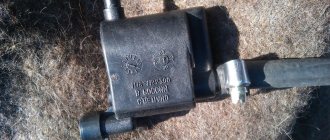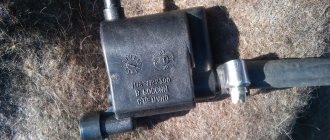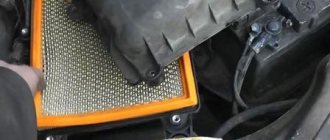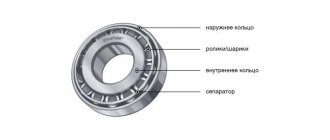Purpose
This spare part was not always part of the car. We owe its appearance to modern requirements for the environmental performance of cars, and to be more precise, the Lada Granta acquired an adsorber thanks to Euro-3.
(Euro-3 is an environmental standard that was introduced in 1999, but Russian manufacturers were able to meet its requirements only in 2008.)
The adsorber, for which Granta became one of the first “shelters” in the domestic automotive market, is a spare part directly connected to the catalyst. It allows you to accumulate gasoline vapors to prevent them from entering the exhaust manifold.
Such actions allow you to preserve the catalyst and prevent its premature wear, since the combination of a cold catalyst with gasoline vapor is unacceptable. As soon as the engine warms up to the required temperature, the adsorber purge sensor is activated. The adsorber valve drives the vapors back into the gas tank.
How to check the adsorber valve. On our VAZs
A specific question is: how to check the operation of the adsorber valve? This device is found on many new cars. It is designed to absorb excess carbon gases from the car's gas tank. Thus, this mechanism prevents the release of gases into the atmosphere. It was necessary to use a device of this type after the introduction of new restrictive Euro-3 and higher standards. When working properly, the car has a low level of pollutant gases in the exhaust, and there is also a slight reduction in fuel consumption. However, like any device, this engine element also tends to break. Failure can occur due to clogging of the adsorbent inside the absorber, as well as due to direct mechanical impact on the absorber body. In any case, problems begin when the engine operates...
CONTENTS OF THE ARTICLE
First, a little definition.
The adsorber valve - essentially stands on a can that has activated carbon inside, is actually installed in the gas tank (or nearby, maybe in the power system) and absorbs excess gasoline vapors. This “can” absorbs them, condenses them and sends them back to the power system. But for proper and long-term operation it needs to be ventilated.
Additional features
Of course, initially, created to create environmentally friendly engine operation, the Lada Granta adsorber, the price of which is insignificant, was underestimated. Manufacturers tried with all sorts of tricks to circumvent this newfangled trend, but the law obliged all car manufacturers who did not comply with this innovation to pay heavy fines.
Although AvtoVAZ has never been known for its large exports, it was forced to take measures to install an adsorber, since it has a small, but still a sales market. Today, the adsorber is installed on the Lada Granta without fail, since world research has revealed the following capabilities of this component:
— reduction in gasoline consumption
A similar result is achieved because the adsorber valve allows gases to be driven back into the gas tank, from where they enter the engine, which, when warm, is capable of processing them. If this device is missing, or the canister valve itself does not work, Granta loses fuel, which significantly increases consumption.
— normalization of the exhaust system
Thanks to filtration, the likelihood of premature wear of the system and its components disappears.
Valve - as the most important component of the device
Speaking about how the adsorber valve works, it is necessary to introduce the device itself. It is, roughly speaking, a can of coal, which is equipped with a valve that allows the vapor to condense and direct. The canister purge valve is controlled by the ECU, which sends a signal to open/close it.
Important!!! The adsorber solenoid valve can create certain troubles for the driver. In the cold season, when starting a cold engine, a certain sound similar to clicking may be heard. This sound is normal, since the valve may not work correctly when cold.
In order not to confuse this sound with possible breakdowns, it is necessary to apply gas control. If there are no changes, you can safely attribute the clicks to the absorber.
What is an adsorber for?
Before moving on to the question of how to check the operation of the adsorber, let us briefly describe the operation of the gasoline vapor recovery system (in English called Evaporative Emission Control - EVAP). This will give a clearer picture of the functions of both the adsorber and its valve. So, as the name implies, the EVAP system is designed to capture gasoline vapors and prevent them from entering the surrounding air unburned. Vapors are formed in the fuel tank when gasoline is heated (most often during long-term parking under the scorching sun in the warm season) or when atmospheric pressure decreases (very rarely). The task of the fuel vapor recovery system is to return these same vapors to the engine intake manifold and burn them along with the air-fuel mixture. As a rule, such a system is installed on all modern gasoline engines in accordance with the Euro-3 environmental standard (adopted by the European Union in 1999).
The EVAP system consists of the following elements:
- carbon adsorber;
- adsorber purge solenoid valve;
- connecting pipelines.
There are also additional wiring harnesses leading from the electronic engine control unit (ECU) to the said valve. With their help, this device is controlled. As for the adsorber, it has three external connections:
- with the fuel tank (through this connection, the generated gasoline vapors directly enter the adsorber);
- with an intake manifold (it is used to purge the adsorber);
- with atmospheric air through the fuel filter or a separate valve at its inlet (provides the pressure drop necessary to purge the adsorber).
The adsorber is a kind of barrel (or similar vessel) that is filled with ground coal, in which gasoline vapors actually condense, after which they are sent to the car's power system as a result of purging. Long and proper operation of the adsorber is possible only with its regular and sufficient ventilation. Accordingly, checking the car adsorber is to check its integrity (since the body may rust) and the ability to condense gasoline vapors. Even older adsorbers pass the carbon contained in them through their system, which clogs both the system and their purge valve.
The solenoid valve for purge the adsorber directly purges the system from gasoline vapors present in it. This is done by opening it upon command from the ECU, that is, the valve is an actuator. It is located in the pipeline between the adsorber and the intake manifold.
As for checking the adsorber valve, firstly, it is checked that it is not clogged with coal dust or other debris that can get into the fuel system when it is depressurized from the outside, as well as with coal from the adsorber. And secondly, its functionality is checked, that is, the ability to open and close on a command coming from the electronic engine control unit. Moreover, not only the presence of the commands themselves is checked, but also their meaning, which is expressed in the time during which the valve must be open or closed.
Interestingly, in engines equipped with a turbocharger, a vacuum is not created in the intake manifold. Therefore, for the system to operate, it is provided with another two-way valve that operates and directs fuel vapor into the intake manifold (if there is no boost pressure) or to the compressor inlet (if there is boost pressure).
Please note that the canister solenoid valve is controlled by an electronic unit based on a large amount of information from temperature sensors, mass air flow, crankshaft position and others. In fact, the algorithms by which the corresponding programs are built are quite complex. It is important to know that the greater the engine air consumption, the longer the duration of the control pulses from the ECU to the valve and the stronger the canister purge.
That is, what is important is not the voltage supplied to the valve (it is standard and equal to the total voltage in the automotive electrical network), but its duration. There is such a thing as “adsorber purge duty cycle”. It is scalar and is measured from 0% to 100%. A zero threshold indicates that there is no purging at all, respectively, 100% means that the adsorber is purged as much as possible at a given time. However, in reality this value is always somewhere in the middle and depends on the operating conditions of the machine.
Also, the concept of duty cycle is interesting because it can be measured using special diagnostic programs on a computer. An example of such software is the Chevrolet Explorer or OpenDiag Mobile programs. The latter is perfect for checking the adsorber of domestic cars VAZ Priora, Kalina and other similar models. Please note that an additional scanner, such as an ELM 327, is required to use the mobile application.
Features of valve operation
The Grant canister purge valve itself was inherited from Kalina. Thus, the Kalina adsorber purge valve and the Lada Granta adsorber purge valve are completely identical. This allows us to assert that the signs of adsorber malfunction in both cars are identical.
If we take into account the Kalina adsorber purge solenoid valve, malfunctions and their symptoms can be completely attributed to a malfunction of the adsorber of its younger brother.
How to replace?
Replacing this part yourself is not difficult. If there are signs of a malfunctioning adsorber, do not hesitate - replace it. It will only take a few tens of minutes. So, we buy the necessary spare part (and it is inexpensive). We will need several clamps, bolts, and tools. Yes, and don’t forget to replace the hose, as it may also be “broken.”
Read more: Battery for Kyron diesel
According to the requirements of new environmental standards that limit the content of harmful substances in exhaust gases, vehicles must be equipped with an EVAP system. This equipment prevents harmful fuel fumes from entering the atmosphere. The main function in the fuel vapor recovery system is performed by the adsorber. Some people underestimate the importance of this element in the operation of a car. However, a malfunction of this seemingly minor component can lead to damage to the fuel pump and affect the operation of the entire engine. Therefore, experts recommend checking the adsorber valve when signs of engine malfunction appear.
How to understand a malfunction of the absorber
Speaking about the adsorber valve, the symptoms of a malfunction will be fairly standardized, which makes it possible to obtain a fairly detailed description. So, signs of a malfunctioning adsorber valve:
— Constant smell of gasoline in the cabin.
This fact is caused by improper circulation of gases, which may have a certain leakage. Due to the proximity of the system to the air filter, odors freely penetrate into the cabin.
— Valve knock.
Signs of a malfunction of the canister purge valve on the Grant include this sound, familiar to all Grant owners.
(to fix this, you can tighten the nut, or you can purchase a new one; fortunately, the Lada Granta adsorber valve, the price of which is low, is available for purchase)
— Increased fuel consumption.
An inoperative adsorber ventilation valve is not able to control the correct path of gases, which does not allow them to be processed in the form of combustion.
— The amount of harmful substances released through the system increases.
Speaking about how the canister purge valve works and why, do not forget that increasing the environmental performance of a car is a primary task, which can be disrupted if the canister purge solenoid valve does not function correctly.
- Sounds similar to some hissing.
Strong hissing in the adsorber hose, the cause of which is the accumulation of gases, is not uncommon. Since modern requirements for cars do not allow gas emissions while parked, a certain accumulation is acceptable.
— Characteristic sounds coming from the gas tank.
Speaking about the Lada Granta adsorber, the malfunction of which is always characterized by extraneous sounds coming from the gas tank, it must be said that they are the most typical sign of a breakdown. In this case, the adsorber sensor may not give any indicators of malfunction, therefore, it must also be replaced.
Thus, signs of a malfunction of the Lada Grant canister purge valve are quite easy to identify. In addition, they are detected when simply refueling the car, which necessarily requires opening the gas tank cap.
What is the threat?
Of course, you can continue to travel on roads with such a fault. The car will start to drive, but it will still have floating idle. In addition, if the malfunction of the adsorber is not corrected in time, then at the nearest gas station, when trying to fill the tank with gasoline, the cap can literally “shoot” from the gases that are formed, which are not removed in time. So it would be best to replace the defective part with a new one.
In addition, if the gas tank is poorly ventilated, this can lead to a vacuum. And as a result - deformation and damage to such an important spare part as the fuel pump. And an unventilated adsorber can also cause fuel accumulation in the intake manifold. And this can already affect the stability of the entire engine.
How to repair a problem
When talking about repairing the adsorber, the fault should be clearly identified. For example, if we are talking about the Grant adsorber purge valve, the malfunction of which can be indexed by the lack of high-quality gas removal, a new VAZ adsorber purge valve can be a solution to the problem.
The repair of the adsorber valve itself comes down to using a Phillips screwdriver and its application. The procedure for influencing the Lada Granta adsorber sensor:
1) We remove the terminals so that there are no disastrous consequences.
2) Apply physical force and gently remove the valve.
3) We compare the new valve and the old one, because anything can happen in life. Buying an adsorber valve, of course, is a simple thing, but there are mistakes made by sellers/storekeepers who may mistakenly sell an unnecessary spare part.
4) We insert a new valve, assemble this system, return the terminals to their place and enjoy life. The Grant adsorber purge valve, the price of which is almost equally low throughout the Grant sales area, is also a reason for a small, but still joy.
It is impossible in the course of the story about the adsorber not to mention the fact that a huge number of Lada Grant owners prefer to remove this device. There are two reasons for this action:
- lack of desire to repair
— lack of faith in the possible environmental benefits of installing this device in your car
How to remove the purge valve
Remove the negative terminal from the battery. If the mass air flow sensor (mass air flow sensor) interferes, remove the inlet pipe from it. Then bend the valve mount and pull it up. Now you need to disconnect a couple of fittings. The first one can be removed freely; to pull out the second one, press the latch and pry up the antennae, for example, with a thin screwdriver.
Price policy
Speaking about the Grant adsorber purge valve, which can be purchased today in all large and not so large places for selling spare parts for the Russian auto industry, it is impossible not to note its pleasant price. The Grant adsorber valve, the price of which is equivalent to the probability of its failure, allows for independent replacement and is a simple mechanism.
Thus, maintaining the environmental standards of the Lada Granta is truly a man-made matter. The adsorber has become a part that, in addition to caring for the environment, can significantly reduce fuel consumption and improve the operation of exhaust gas removal.
How to identify a problem at work?
The most common symptoms of malfunction include:
1) Sometimes the engine starts to run unstable at idle speed;
2) If clogged, you may feel a slight increase in fuel consumption;
3) The car engine does not start the first time when hot;
4) A noticeable loss of traction at low speeds. At higher speeds, the loss of torque is less sensitive.
Another common malfunction is the appearance of cracks in rubber plugs. Through these cracks (holes), additional air is sucked in, and as a result, leads to problems with the engine.











